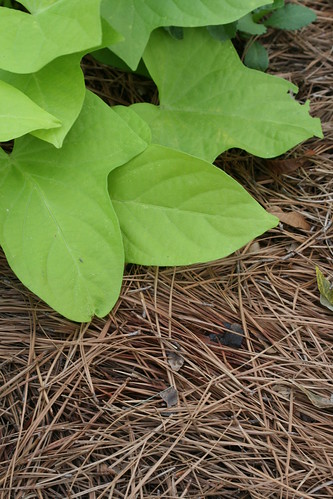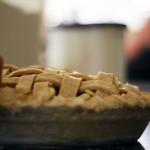 We accomplished alot this weekend, but among the biggest accomplishments and surprises was mulching the yard. That may sound incredibly weird, but it is true. Normally acclomated to using wood-based mulches, I noticed that MU has been using quite a bit of pine straw mulch in their garden areas around the library and Memorial Union corridor. So…
We accomplished alot this weekend, but among the biggest accomplishments and surprises was mulching the yard. That may sound incredibly weird, but it is true. Normally acclomated to using wood-based mulches, I noticed that MU has been using quite a bit of pine straw mulch in their garden areas around the library and Memorial Union corridor. So…
I googled.
I read up, and found out one of my coworkers “knew a guy” (you know how that works). Well, on Friday we had 20 bales of pine straw mulch (it’s baled up like straw) dropped off at the house. We set aside Friday night to “start,” thinking that we’d have to quit for the night and resume Saturday morning.
Totally wrong! Within an hour, we had mulched our entire yard. Our neighbors had traditional wood-based mulch delivered around the same time, and had barely made a dent in theirs, and we were finished. Neighbors meandered over, a rarity in our suburbanite neighborhood. I suspect my coworker will have quite a little side business going by next year based on our employed “Jones” advertising method.
So why did I choose Pine Straw?
- It’s more ecologically friendly as it spares hardwoods and especially cypress trees that are traditionally used for mulch.
- It doesn’t prevent termites, but it certainly doesn’t cater or attract their presence as well as wood-based mulches.
- It stays in place and decomposes well, and doesn’t huge mounds of semi-decomposed dirt that you have to remove.
- It insulates plants, but lets plenty of light and water through.
- Decomposed needles create better soil composition for plants.
- Less weeds as decomposed wood-based mulches create beds of dirt more hospitable toward weed growth.
- Cheap, renewable and CLEAN! No driveway stains, minimal clean-up.
For more information written by our Department of Agroforestry here at MU, check here!
You may also like






